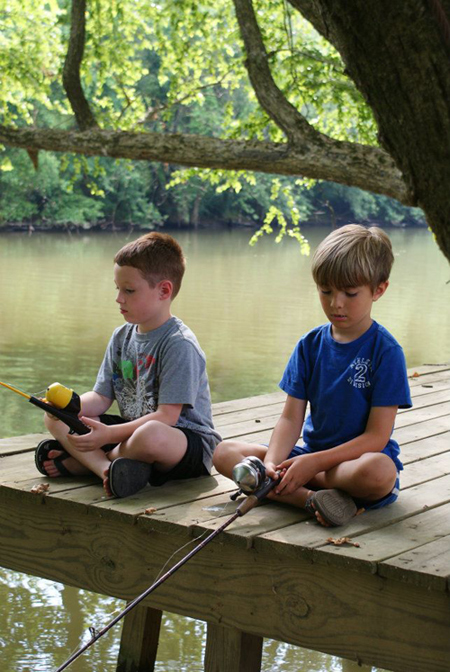By Chris Erwin
[dc]I[/dc]t’s getting to be that time of the year when I turn my attention to a fish that many fishermen over look; I’m talking about the Bluegill. If you have kids, and you want to break them into fishing one of the best times during the year to do it is starting five days before the full moon in May.
That event will happen around the 25 of May this year. Starting the 20 or so, bluegill will begin making their way to the shallows to spawn. Unlike bass, bluegill will take your bait without hesitation when they go on the nest. They will fan out a saucer shape impression usually along old road beds or other hard surfaces, there they will lay their eggs, and many times they will be a lot of pairs in the same location.

Bluegills are well known for “bedding” in large groups, with their circular beds touching one another. Bedding occurs in water two to six feet deep over sand, shell or gravel, and often among plant roots when the bottom is soft. Spawning occurs from April through October with the peak in May and June, when water temperature rises to about 78-80 degrees. A female may lay 2,000 to 63,000 eggs, which hatch 30 to 35 hours after fertilization.
This sets up a scenario which is perfect for starting a kid on the path to getting hooked on fishing; the action can be fast, catching one fish after another, using light tackle it rates very high on the fun scale. I find I end up having as much fun as the kids.
All Lakes in Kentucky have bluegill (Lepomis macrochirus) and they are easy to catch using live bait or small jigs. Because of its willingness to take a variety of natural baits (e.g., crickets, grass shrimp, worms) and artificial lures (e.g., small spinners or popping bugs) during the entire year, its gameness when hooked, and its excellent food qualities, the bluegill is one of the more important sport fish the eastern United States. Once you find the beds action is in your future.
If I’m going to be taking kids fishing I like to go a few days before looking for the beds and mark their locations, figure out the best position for the boat so you’re not drifting into the beds as you begin to fish.
Pre-rig the rods if you’re going to be using live bait, use a small bluegill hook, I like to use a #8-#12 bait holding hooks and a 32oz. split shot about 12 to 14inches up from the hook, at times; I will not use a sinker, but I’ve found for kids the sinker makes the rig easier to handle. The next question is, should you use a bobber or not, if your kids need a lot of help, the bobber makes it easier for you to keep an eye on their line. However, if your kids are more skilled not using a bobber during spawning may be more productive since you want the bait to drop into the nest.
I also found it’s a good idea to bring a hand towel, and a little hand soap to help keep your kid’s hands clean after handling bait.
My last tip on bluegill fishing is to learn how to clean them these are among the best-tasting fish swimming in Kentucky waters, an ice-chest fill with ice just for holding your catch is a good idea getting them very cold before cleaning makes the cleaning process much easier. Start planning now and take a kid fishing! Chris Erwin is the founder and publisher of Kentucky Angling News an on-line magazine available at www.kentuckyangling.com/magazine Chris can be reached by email chris@ashlandbeacon.com


Be the first to comment